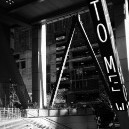Low light comparison: Q vs 007
-
Recently Browsing 0 members
- No registered users viewing this page.
-
Similar Content
-
Low Clouds
By fotografr,
- 1 reply
- 122 views
-
- 4 replies
- 555 views
-
- 11 replies
- 936 views
-
- 0 replies
- 38 views
-
- 10 replies
- 985 views
-





Recommended Posts
Join the conversation
You can post now and register later. If you have an account, sign in now to post with your account.
Note: Your post will require moderator approval before it will be visible.